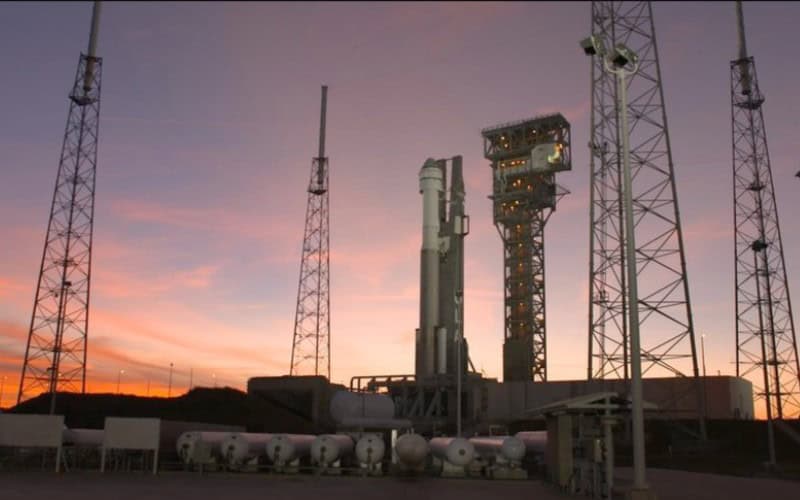
SpaceX will conduct an in-flight abort test of its Crew Dragon spacecraft in early January as the launch of Boeing’s CST-100 Starliner on an uncrewed test flight slips another day, NASA announced Dec. 6.
In one statement, NASA said the in-flight abort test for Crew Dragon is currently scheduled for no earlier than Jan. 4. On that test, a Falcon 9 will lift off from Launch Complex 39A carrying a Crew Dragon spacecraft. About 90 seconds after liftoff, around the time of maximum dynamic pressure on the vehicle, the Crew Dragon will fire its SuperDraco motors to escape the rocket.
The Dragon spacecraft that will be used for that test is the same that performed a static-fire test of the SuperDraco thrusters Nov. 13 at Cape Canaveral. The spacecraft was originally built for the Demo-2 crewed flight test but pressed into service for the in-flight abort after the destruction of another Crew Dragon during an April static-fire test. That spacecraft, which flew the Demo-1 uncrewed orbital flight test, was to be reflown on the in-flight abort test prior to the April accident.
The NASA announcement was the first time a specific date for the in-flight abort test had been announced by either NASA or SpaceX. At a Dec. 3 press conference prior to the launch of a Dragon cargo spacecraft Dec. 5, Jessica Jensen, director of Dragon mission management at SpaceX, said the company was targeting “no earlier than the end of the year” for the in-flight abort. “We’re targeting December. We’ll see if we can get there,” she said.
Separately, NASA, Boeing and United Launch Alliance announced Dec. 6 that the launch of the Starliner uncrewed test flight, known as the Orbital Flight Test, has slipped a day to Dec. 20.
A practice countdown for the mission, known as a “wet dress rehearsal” since the rocket is fueled as part of the test, was postponed a day “due to a weather-related launch delay of an International Space Station re-supply mission, which created a range resource conflict,” ULA announced. That was a reference to the SpaceX Falcon 9 Dragon cargo launch, which was delayed a day because of high upper-level winds. The launch had already slipped two days, from Dec. 17 to 19, because of a minor launch vehicle issue.
Further delays in the Starliner launch would push it close to the Christmas holidays, but at the Dec. 3 press conference Kenny Todd, manager of ISS operations and integration at NASA, declined to say if there was a point where NASA would wait until after the holidays to launch the mission.
“Right now we’re just working with the commercial crew program and really trying to understand what their launch schedule and what their opportunities look like relative to their vehicle processing,” he said. “We’re going to be ready for them.”
Both a successful Orbital Flight Test by Starliner and a successful in-flight abort test by Crew Dragon would open the door for crewed flight tests by both vehicles in 2020. In a Dec. 5 speech at a Space Transportation Association luncheon here, NASA Administrator Jim Bridenstine called commercial crew his highest priority.
“I think we’re getting close. I think it’s going to happen in the first part of next year,” he said of those crewed flights. He acknowledged, though, that there could be “unknown unknowns” found during the upcoming tests that could push back crewed flights. “That’s why you hear me say I’m confident we could launch in the first part of next year, but you don’t hear me give a date.”
























